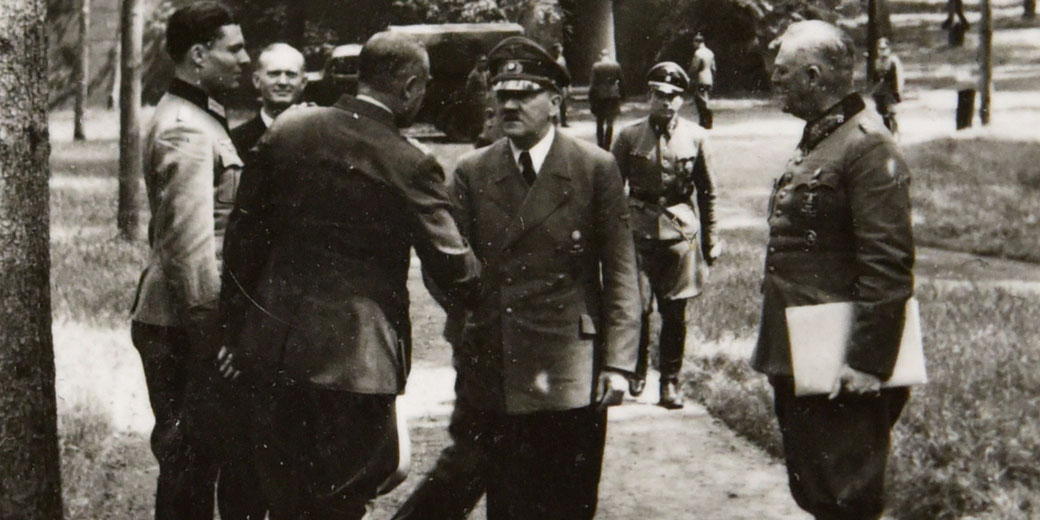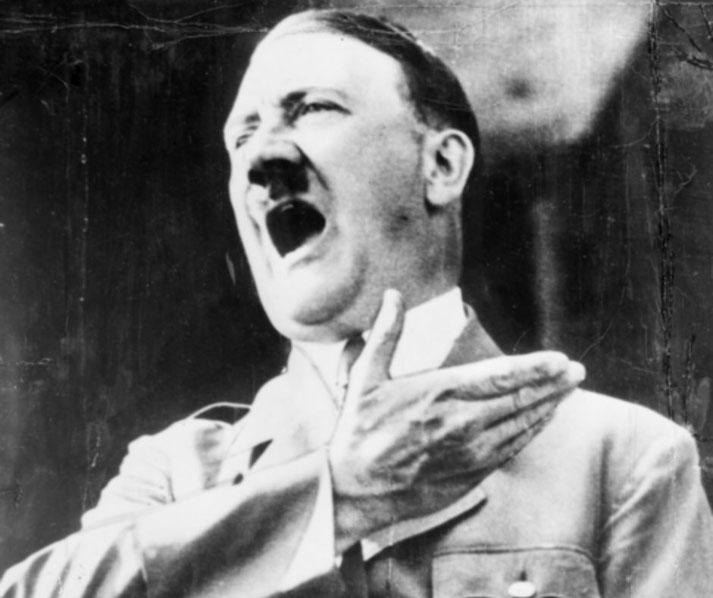July 20, 1944: The closest Hitler ever came to being assassinated

World War II, a period marked by unprecedented violence and upheaval, saw numerous attempts to disrupt the machinery of the Nazi regime from both outside and within.
Among the most audacious of these was the July 20 plot, a daring but ultimately unsuccessful attempt to assassinate Adolf Hitler, the Führer of Nazi Germany.
Orchestrated by a group of high-ranking German officers and civilians, the plot aimed not only to eliminate Hitler but also to seize control of the government and negotiate a peace with the Allies.
Who were the key conspirators?
The July 20 plot was not the work of a lone wolf but rather a concerted effort by a group of high-ranking military officers, politicians, and civilians who were disillusioned with Hitler's leadership and the direction in which Nazi Germany was heading. Among these, several key figures stand out.
At the forefront of the plot was Colonel Claus von Stauffenberg, a decorated war hero who had become increasingly disillusioned with the Nazi regime.
Despite losing an eye, his right hand, and two fingers on his left hand in combat, Stauffenberg remained committed to his military duties.
His high-ranking position in the German Army provided him with the access needed to carry out the assassination attempt on Hitler.
Stauffenberg was the one who personally planted the bomb intended to kill Hitler on July 20, 1944.
Alongside Stauffenberg, there were other key figures such as General Friedrich Olbricht and Major General Henning von Tresckow.
Olbricht was a senior army officer who played a crucial role in modifying Operation Valkyrie to facilitate the coup.
Tresckow, often considered the spiritual leader of the German Resistance, was instrumental in the early planning stages of the plot and had previously made several unsuccessful attempts on Hitler's life.
The plot also involved civilians like Carl Goerdeler, a former mayor of Leipzig, who was designated to become the Chancellor of Germany had the plot succeeded.
Goerdeler had been a vocal critic of the Nazi regime and was in contact with British intelligence about the resistance's plans.
Lastly, the target of the plot was none other than Adolf Hitler himself. As the Führer of Nazi Germany, Hitler's leadership had led to widespread destruction and loss of life across Europe.
The conspirators believed that by eliminating Hitler, they could end the war and save further lives.
How they planned to kill Hitler
The planning and preparation for the July 20 plot were as complex as they were secretive.
The conspirators had to navigate a landscape fraught with danger, knowing that any misstep could lead to their discovery and almost certain death.
The plot centered around Operation Valkyrie, an existing emergency plan developed by the German High Command to maintain order in the event of a disruption, such as an uprising by the millions of forced laborers from occupied countries working in Germany.
The conspirators, led by Stauffenberg and Olbricht, saw an opportunity in this plan.
They modified Valkyrie to serve their purposes, intending to use the German Reserve Army to seize control of key government buildings in Berlin after Hitler's assassination.
The task of assassinating Hitler fell to Stauffenberg. As Chief of Staff to General Friedrich Fromm, the head of the Reserve Army, Stauffenberg had regular access to Hitler during briefing sessions.
This position allowed him to carry a bomb in his briefcase into Hitler's conferences without arousing suspicion.
The conspirators faced numerous challenges and obstacles during the planning stages.
They had to ensure the secrecy of their plot while coordinating a large number of people across different locations.
They also had to deal with the moral and ethical implications of their plan, particularly the decision to assassinate Hitler.

What happened in the 20 July Plot?
The day began with Colonel Claus von Stauffenberg flying from Berlin to the Wolf's Lair, Hitler's heavily fortified headquarters in East Prussia.
In his briefcase, he carried a bomb with a British-made plunger detonator, designed to explode ten minutes after being activated.
Upon his arrival, Stauffenberg was ushered into a conference room where Hitler was meeting with his top military officials.
Stauffenberg managed to activate the bomb in a nearby room under the pretense of changing his shirt, which was a plausible excuse due to his war injuries.
He then returned to the conference room and placed his briefcase under the conference table, as close to Hitler as he could manage.
Shortly thereafter, he excused himself from the room, claiming he needed to make a phone call.
At approximately 12:42 PM, the bomb exploded, causing massive destruction and chaos.
Four people were killed, and almost everyone in the room was injured. However, Hitler survived.
A heavy, solid-oak conference table had shielded him from the full force of the blast.
Stauffenberg, witnessing the explosion from a distance, was convinced that no one could have survived and hurriedly flew back to Berlin to initiate the second phase of Operation Valkyrie.
The fallout in Germany
The failure of the July 20 plot had immediate and far-reaching consequences. Hitler's survival from the assassination attempt led to a swift and brutal crackdown by the Nazi regime, forever altering the lives of those involved in the plot and the course of the German Resistance.
In the immediate aftermath of the failed assassination, Hitler was reportedly in a state of rage and shock.
He quickly regained control, however, and initiated a nationwide manhunt for the conspirators.
The Gestapo, the secret state police, and the SS, Hitler's elite paramilitary organization, were mobilized to root out everyone involved in the plot.
The reprisals were swift and brutal. Stauffenberg and three other conspirators were executed by firing squad in the courtyard of the Bendlerblock, the German military headquarters in Berlin, just hours after the failed attempt.
In the following weeks and months, an estimated 4,980 people were arrested, and many were executed.
This included not only those directly involved in the plot but also those with even remote connections to the conspirators.
The failed plot also had a significant impact on the course of World War II. Hitler, who had already been growing increasingly paranoid, became even more distrustful of his military officers.
He took greater personal control of the military, making strategic decisions that many historians argue hastened Germany's defeat.
How the world responded
In the immediate post-war period, the conspirators of the July 20 plot were viewed with mixed feelings in Germany.
Many Germans, grappling with the horrors of the Nazi regime and the devastation of the war, saw the conspirators as traitors who had sought to destabilize the country in a time of war.
However, as the full extent of the atrocities committed by the Nazis came to light, perceptions began to shift.
The conspirators, once seen as traitors, were increasingly viewed as heroes who had made a courageous stand against a brutal regime.
Today, the July 20 plot is recognized as one of the most significant acts of resistance against the Nazi regime.
The German Resistance Memorial Center, located in the Bendlerblock where Stauffenberg and his fellow conspirators were executed, commemorates the plot and other acts of resistance against the Nazis.
Every year on July 20, ceremonies are held in Germany to honor the courage and sacrifice of the conspirators.
What do you need help with?
Download ready-to-use digital learning resources
Copyright © History Skills 2014-2025.
Contact via email
With the exception of links to external sites, some historical sources and extracts from specific publications, all content on this website is copyrighted by History Skills. This content may not be copied, republished or redistributed without written permission from the website creator. Please use the Contact page to obtain relevant permission.





